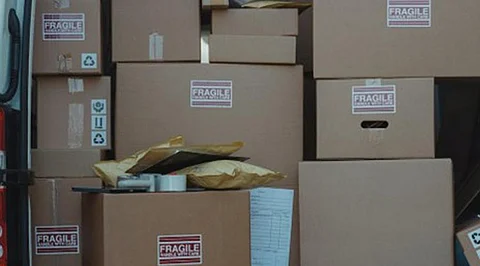

Every day, billions of items are bought and used by consumers around the world, becoming essential in every aspect of our lives. But as the demand for Consumer-Packaged Goods (CPG) continues to grow, manufacturers face unprecedented challenges, including the heightened risk of fraud, counterfeiting, and product adulteration.
Luckily, digital-physical security features can help boost consumer trust, prevent financial and reputational damages, and minimize the risk of fraud.
In this guide, you'll find answers to critical questions such as "what is CPG?", "how are consumer packaged goods made?", and "how can smart packaging solutions help?". Let's dive in!
Consumer packaged goods refer to a category of items that are usually purchased by consumers for daily use. Because of their nature, consumer packaged goods usually have a short lifespan and often need replenishment or replacement within days or weeks.
Some common consumer packaged goods examples include clothes, makeup, cosmetics, beverages, food, and household products.
Although the CPG industry is thriving, the competition has become increasingly fierce, encouraging manufacturers in the sectors to deploy more sophisticated strategies to boost operational efficiency, security, and competitiveness.
Now that you have a better understanding of the CPG industry meaning, let's look at what sets CPGs apart from fast-moving consumer goods (FMCGs). The latter is a subcategory of CPG, but they are often characterized by a shorter lifespan and quicker turnaround times. Some common examples of FMCGs include beverages, food, toiletries, and products such as vitamins and supplements.
The way packaged goods are made varies significantly depending on the niche they are in and their target audience. Where the products are manufactured might also impact the standards and regulations that manufacturers need to uphold in the production process.
If you are looking to better understand the CPG companies' meaning, notable similarities between how CPGs in different industries are produced include far-reaching supply chains and global distribution networks. Nonetheless, the consumer goods market in the US is one of the most varied ones, and, also thanks to the advent of eCommerce, it is today valued at an all-time high of over $635 billion.
Now that you have the answers to questions such as "What is a CPG?", it is time to look into the benefits that digital-physical security features can bring to the market of consumer packaged goods.
To understand this, it is important to look at the challenges that the industry is facing today. As the demand for CPGs continues to grow, the global supply chain has stretched thin, which has left it exposed to heightened risks of fraud and counterfeiting. Smart packaging solutions based on technologies such as blockchain and digital-physical seals can help manufacturers gain unprecedented levels of visibility and transparency in their supply chain. Let's look at the advantages that these technologies can bring to the industry.
Here are some examples of digital-physical security features that can be applied to consumer goods packaging:
According to estimations, over 3% of the world's trade is made by fake goods – and this figure is only increasing as the industry moves towards digital channels and eCommerce. But by only using traditional packaging solutions, companies expose themselves further to counterfeiting, fraud, and product adulteration, which can cause financial and reputational damages alike.
Thanks to smart packaging solutions and digital-physical seals, manufacturers can now track and trace the location and status of each product across the supply chain, thus preventing counterfeiting and fraud incidents.
Digital-physical seals created by combining technologies such as IoT, geolocators, blockchain, RFID tags, and NCF labels are a great option to provide consumers with the product authenticity evidence they need to grow their level of trust in a brand.
Indeed, today, consumer trust levels in brands are at an all-time low, meaning that manufacturers need to go above and beyond to win over the loyalty of their audience. Digital-physical seals provide the necessary evidence to consumers that a product is original, authentic, and integral.
Fraudulent actions such as product refilling, adulteration, and diversion can lead to a cascade of negative consequences for manufacturers. Especially in sensitive industries such as the pharmaceutical, food, and cosmetic sectors, illegal refilling and fake copies can pose a significant public health threat which, in turn, can lead to scandals and costly product recalls.
In any case, counterfeit copies of original products on the market can affect a company's revenue, reputation, brand image, and customer loyalty.
As seen above, there are endless reasons to invest in a high-quality, end-to-end authentication solution for your CPG company. However, the digital-physical seal options and technologies available are many, and you should consider the benefits of investing in a custom-made strategy that is tailored to your company's unique needs.
Join our WhatsApp Channel to get the latest news, exclusives and videos on WhatsApp
_____________
Disclaimer: Analytics Insight does not provide financial advice or guidance. Also note that the cryptocurrencies mentioned/listed on the website could potentially be scams, i.e. designed to induce you to invest financial resources that may be lost forever and not be recoverable once investments are made. You are responsible for conducting your own research (DYOR) before making any investments. Read more here.
